Wilson Family
Scottish bravery characterizes the Wilson family. One such story tells of a ship driven onto the coast of Scotland, and how the bravery and promptness of the Wilson family saved all aboard.
John Wilson, son of John and Isabelle (Kennedy) Wilson, born about 1710 in County Antrim, N/Ireland (but of Scottish descent). He married Jennet Stinson, of Four Mile Run, County Antrim, about the year 1735, and emigrated with her to Pennsylvania. They settled in lower Buckingham, Bucks County.
The exact date of their arrival is not known but they probably came with the Thompsons, McGraudys and a number of other families that settled in Warwick, Buck-ingham, Northampton and Newtown communities. The Wilsons had nine (9) children!
In 1737, John Wilson secured a warrant for 125 acres in Buckingham Township near the line of Wrightstown Township. This was the first known land purchase by the Wilson family in the Colony.
Thompson Family
The family was of pure Scottish ancestry, but spent time in N/Ireland. They left the lowlands of Scotland for N/Ireland during the Ulster Plantation initiative. Later the Thompsons emigrated to the American colonies, leaving behind civil and religious turmoil; a turmoil that troubled the Scots-Irish during the 16th and into the 17th century in both Scotland and Ireland. The opportunity to own land in America was also a strong incentive to emigrate.
The Ulster Scots, or Scots-Irish as they are generally called, clannish by training in their native land, were true to this training in their exile in Ireland and even on their removal to Pennsylvania. We find that each Ulster ship brought pioneers connected by a common history and often a common ancestry. It was quite logical therefore for these sturdy folks to settle in the same community.
Elizabeth McGraudy married Hugh Thompson in County Tyrone N/IRE about 1719. They had four sons: Hugh, Robert, William, and John. After Hugh's death, the brave widow Elizabeth and her four sons emigrated to the American Colony of Pennsylvania, through the Port of Philadelphia, around 1735-1740. They settled in Bucks County. This difficult voyage may have taken 6 to 8 weeks!
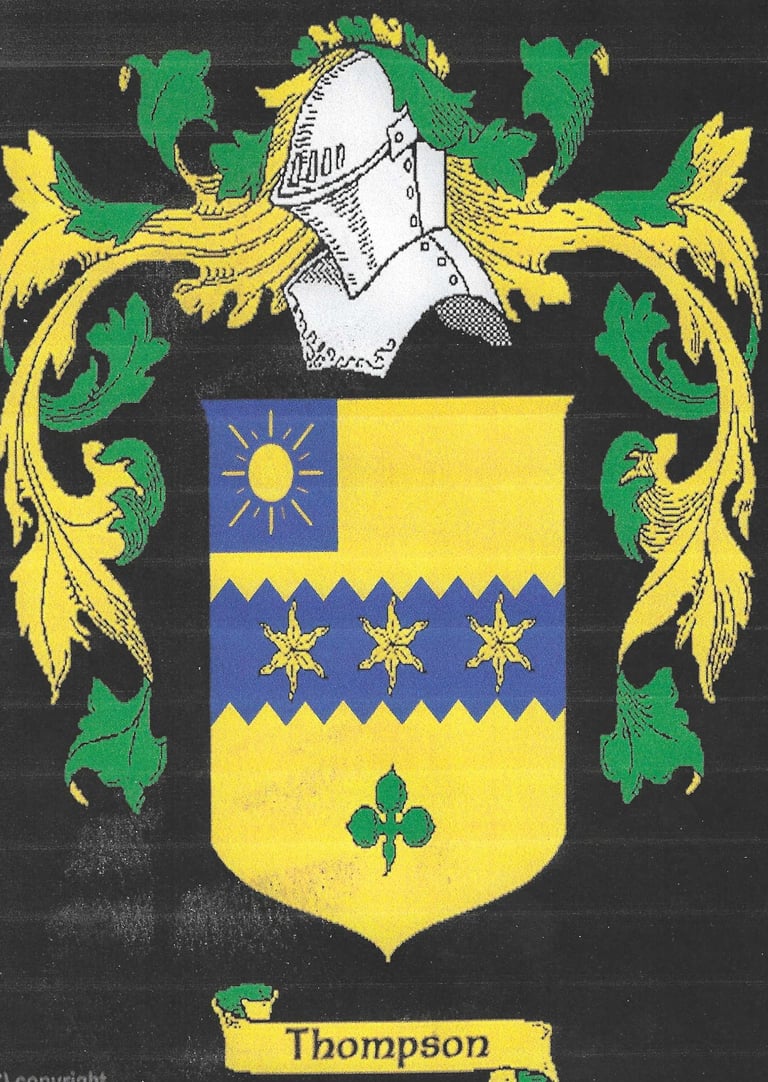

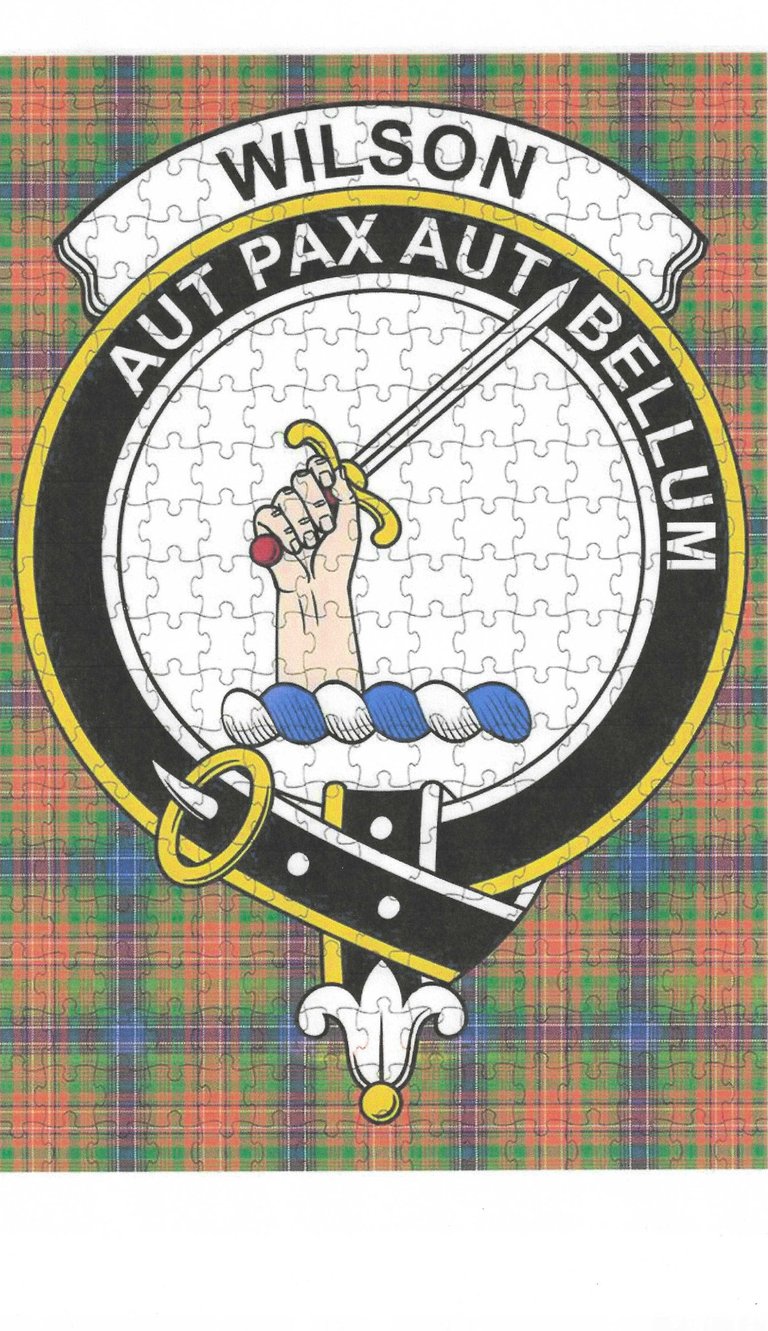

About Us
_______________________________________________________________________________________________________________________________________________________________________
We are indebted…We are who we are because they were who they were….
We are wiser because they existed…Like branches on a tree, our lives may
grow in different directions yet our roots remain as one…
________________________________________________________________________________________________
Where in Scotland did Our Thompson, McGraudy, and Wilson Ancestors live?
Most likely the Thompsons, the McGraudys, and the Wilsons lived in the Lowlands (southern) of Scotland as they were mostly Presbyterians and almost all of that branch of Christianity lived in the southern part of Scotland, between Edinburgh and the English border. As we began looking for information about where the Thompsons in particular might have lived, we found several documents showing places where Thompsons had lived from the 1100s thru 1500s. We`ve cited several with black dots on a map entitled “Where Thompsons Lived in Scotland” (see Genealogy section of this website). Most of the locations are in southern Scotland and northern England, and given the proximity of one to another, it is most likely our family came from that area.
As is the case with the Thompsons and the Wilsons, most family names do not have any single point of origin, and numerous variations are found throughout western Europe and now North America. Often in the Genealogy of the Wilson-Thompson Families book of 1916, the families are cited as Scottish. We should accept that premise to be correct since it is the closest first-hand knowledge that exists which links us to our ancestors.
A family of Thom(p)sons, or `sons of Tom`, owned an estate in the 1600s in what is now the present-day Edinburgh Scotland suburb of Duddingston. Another family of Thomsons boasted their heraldic arms and motto “Truth Will Prevail” in what is now the Edinburgh suburb of Corstorphine. Early Thompsons were also found in Clyde/Forth, in Roxburgh, in Dunfriesshire, and in Glenshee Scotland. "I wish for a Fair Fight" is also commonly seen as a Thompson Coat of Arms. One of the earliest recorded Thomsons in Scotland is John Thomson of Ayrshire. Similar records can be found for the Wilsons. As a side note, Ayrshire was the main recruiting grounds for the freedom fighter William Wallace and for the warrior king Robert the Bruce.
While our families are surely Scottish, it is not surprising to also find Thompsons and Wilsons closeby in nearby Northern England. The Thompson surname originated during the Medieval Period. Early records show an Elborand filius Thome from Cambridge England in 1273, and a John Thomson in 1318 and a John Thompson in 1349 in the Whitby area of Yorkshire, and a Ralph Thommysone in Suffolk in 1381. In nearly every county in Scotland where Thompsons were found, so were Wilsons found.
The Anglo-Scottish Border Wars took place from the 14th thru the 16th century. People living near the border of Scotland and England were often involved in battles in which Scottish clans raided the other side for livestock and goods, and vice versa. This was a time of Scottish Clans, including the Thom(p)son Clans. The Thom(p)son Clans included one of the West March Reiver clans and one of the Middle March clans. A March was a geographical area near the border. At that time, allegiance was to one’s clan, and not to a central government. Were these clans part of our ancestry? The `Thompson’ name appeared frequently during this research, and therefore we cannot discount the possibility of a connection. In 1587, James VI issued a Scottish Act of Parliament to quell the raids. The verbiage of the statute was: “For the quieting and keping in obiedince of the disorderit subjectis inhabitantis of the borders hielands and Ilis.” Seventeen clans were identified as needing to be controlled, including two with the name of Thompson. The Genealogy section of this website displays a map showing the locations of the Thompson Border Reiver Clans. Gradually, several of the clan leaders were executed, and many clan members moved to the Ulster Plantation of Northern Ireland.
A Wee Bit of Scottish History
European history has always been a bit complicated and full of turmoil. The history of England, Scotland, and Ireland is no different: battles, unrest, over throws, executions, famine, oppression, wars, exiles, religious conflicts. You name it, they had it. In attempt to understand more about the Thompsons and the Wilsons a bit of history may help understand the climate and context of their past, albeit an abbreviated version.
Until the early 1500s, the Catholic Church and the Popes controlled nearly all things religious in Europe. However, not all Christians were happy. In 1517, monk and theologian Martin Luther expressed his concerns against the Catholic Church by posting his `95 Theses' on the church door in Wittenburg Germany. Luther influenced other religious leaders, including French cleric John Calvin and Scottish religious leader John Knox. This led to an uprising against the Catholic Church, the start of the Protestant Reformation, and the beginning of several Protestant denominations of Christianity.
Around 1534, English King Henry VIII desired a divorce from wife Catherine (the first of his 6 marriages!). He petitioned Pope Clement VII for a marriage annulment. It was denied. In retaliation, an angry King Henry took control of the Church. He reduced the Pope's power and influence, declared himself the head of the church, and created a new denomination, called Anglican (also called Episcopalian).
Henry VIII was followed by his son Edward VI. Edward's reign was marked with economic problems, social unrest, and a losing war with Scotland. But he continued to strengthen the Anglican control of the church. Elizabeth I followed as the Queen of England and Ireland from 1558-1603. She was a strong Episcopalian (Anglican). Elizabeth engaged in a protracted uprising war in Ireland called the Nine Years War (1593-1603) in which England finally took control of Ireland. Elizabeth was succeeded by James VI/I of Scotland (1566-1625), enjoining the crowns of England and Scotland. James was great-great grandson of Henry VIII, thus making him a successor for the crown. James was raised a Protestant. He reigned from 1567-1625. James VI had several accomplishments, including starting the Ulster Plantation in Ireland, starting a settlement in Jamestown Va in 1607, authorizing the King James Version of the Bible in 1611, and attempting to impose Anglican episcopacy in Scotland. He was succeeded by Charles I (1600-1649), who was tried for treason and executed by the British Parliament.
His son Charles II (1630-1685) became King of Scotland, and eventually King of England and Ireland. He demanded that all citizens convert to Anglicanism and to swear allegiance to him (this was a common demand of several kings). Not all agreed, especially Covenanters. The Covenanters were Scottish Presbyterians who in the 17th century had signed covenants to defend their religious beliefs and to resist such directives (thus the name Covenanters). They opposed this Anglican imposition in Scotland. The Covenanters faced persecution and even death during this period. It became known as The Killing Times. One such victim was family member Margaret Wilson. She became one of the infamous Wigtown Martyrs of Scotland of 1685. Margaret's father was Gilbert Wilson. Gilbert's brother was John Wilson, father of the John Wilson who first came to this country in the early 1700s. Margaret was therefore a first cousin to John Wilson (an early member of our Wilson family), and a niece of John Wilson's father, also named John Wilson. Along with friend Margaret McLauchlan, young Ms. Wilson was tried, found guilty, and sentenced to death by drowning. At age 18 she was drowned at the stake for refusing to forego her faith and refusing to pledge allegiance to the King. A more complete history of The Courageous Margaret Wilson tragedy is found later in this website under Rest of The Story tab.
Given the political climate, the civil unrest, the religious pressures in Scotland, the declining economy, and a perceived opportunity in nearby Ulster, the Wilsons and Thompsons and McGraudys and thousands of other yeoman class Scottish Presbyterians migrated to N/Ireland during the 1600s and into the 1700s. The Thompsons, McGraudys, Wilsons, and Neelys were part of the working class. There is little evidence that our families were privileged in any way.
In the cities, the beginnings of the Scottish Enlightenment for the well-to-do could be seen. The Enlightenment period started in the late 1600s and was characterized by intellectual, scientific, educational, and economic growth among the gentry and nobility. Five universities were started, trade with the American Colonies expanded, banks and printing houses were created, and science, philosophy, and literature flourished in Scotland (and England). Intellectuals included economist Adam Smith, poet Robert Burns, writers Sir Walter Scott and William Shakespeare and John Donne, philosophers David Hume and Francis Bacon, and scientist Joseph Black among others. The working class, including our families, enjoyed little of the Enlightenment Period.
Q2: William Thompson and John Thompson married sisters Elizabeth and Mary Huston respectively. What was special about these sisters? Answer in Rest of the Story section.
The Move to Northern Ireland
People have always moved back and forth across the Irish Sea. In 1603 King James VI of Scotland inherited the English and Irish thrones, thus uniting the crowns and making him King James I of England, Scotland and Ireland. James took control of 3.8 million acres of Northern Irish land and created what was called the Ulster Plantation. The Irish were not happy about this influx of Scots. James was a Protestant king, and Ireland was a mostly Catholic nation. James felt he needed to `plant' Ireland with Protestant, English-speaking Scottish (and a few English). Previous `plantation' efforts had been attempted, but this was clearly the largest and most effective. James preferred Scots for the colony because, in his words, they were “Of a middle temper between the English tender and the Irish rude breeding, and a great deal more like to adventure to plant Ulster than the English.” For a more detailed discussion of the political and religious turmoil in Northern Ireland (Ulster), see "History Can Be a Bit Complicated ” in the `Rest of the Story' section of this website. Scots however welcomed the opportunity to move from southern Scotland to the Ulster Plantation.
Ulster (N/Ireland) was nearby, only 30 miles to Ireland by boat. Scots could obtain long-term farmland leases for a period of 21 to 31 years, and occasionally even longer (in some cases for as long as three generations!). This was seen as a sure way to improve one’s economic standing. By 1619 over 8000 families had relocated to Ulster. Another major influx of Scots into Ulster occurred in the 1690s when tens of thousands fled a famine in Scotland. By 1715 over 1/3 of Ulster’s 600,000 inhabitants were of Scottish heritage.
Historian Barry Maloney describes the Ulster Plantation effort this way (Kinsale 2021): "The Irish loss in the battle of Kinsale (Ireland) in 1601, triggered the Flight of the Earls in 1607, whence entire families of the rebellious rulers of the northern providence of Ulster sailed into permanent exile in Europe. This allowed their lands to be confiscated by the English and eventually `planted’. The concept of plantation was to take the seeds of a Protestant English or Scottish town (farmers, builders, clergy, teachers, soldiers, tradespeople and their families) and plant those `seeds` in Ireland, hoping that an English or Scottish town and society would grow and prosper. This became known as `The Plantation of Ulster`, the logic being it would prevent future rebellions and strategically protect Ireland from foreign powers. It involved an organized migration of people across the Irish Sea. By far the largest percentage of these `planters’ were Presbyterians from the lowlands of Scotland who, facing poverty, over-population, and conflict in their homelands, sought a new life in Ireland. Geographically, the places are so close that you can see Ireland from western Scotland, and politically the new King of England after Elizabeth died in 1603, was King James VI of Scotland, who became King James I of England, Scotland, and Ireland" (page 48).
Q3: What gift did General Lafayette give to 3rd generation John Thompson (1795-1869) in 1824? Answer in Rest of the Story section.
When did Our Ancestors move from Scotland to Ireland?
We do not know exactly when our families moved to Ulster. The Thompsons moved from Scotland to Ireland in or before 1719, as we know Hugh Thompson and wife Elizabeth McGraudy Thompson were married in County Tyrone, Ireland in 1719. We also have documentation that all four sons (Hugh, Robert, William, John) of the Thompsons were born in Ireland; the oldest born in 1720. We believe the Wilsons, led by John Wilson, and several McGraudy’s including Elizabeth’s brother Samuel and son Gaun, moved to Ireland around the same time.
There is an interesting and compelling theory that the move by the Wilsons and the Thompsons to Ulster may have occurred in the early migration efforts of the Ulster Plantation (The Plantation of Ulster 2011 by Jonathon Bardon). Soon after King James initiated the migration effort, Sir Hugh Montgomery petitioned the King to allow him to establish a plantation settlement in Ulster. It was granted, and Montgomery started the most aggressive and successful settlement of the Plantation in County Down, near what is now Belfast. "The surnames of Scots who took out letters of denization in 1617...include....Thompson...Wilson..." (page 77). A letter of denization was a Visitor Visa of its day. Bardon continued "The Scots began to arrive in force in the spring of 1607" (page 78).
Q4: How did William Penn happen to obtain legal ownership and proprietor of the Pennsylvania territory? Answer in Rest of Story section.
Where in Ireland did our Ancestors Live?
As cited above, we know the Thompsons married in County Tyrone, and that the Wilsons lived in County Antrim. Additionally, we found maps showing where various families, including Thompsons and Wilsons in the County Down Belfast area, as mentioned above by author Jonathon Bardon (see the two maps at the end of this section).
Did Our Ancestors speak with a British, Scottish, or Irish accent?
Since we have no recorded language of our ancestors, it is hard to know for sure. However, we know the Thompson boys and the Wilsons, were born in Ireland to Scottish parents. We also know that Scottish emigrants kept to themselves. They lived with other Scots in enclaves after moving to Ireland, and did likewise after moving to the Colonies. It is most probable that our Scots-Irish (Ulster-Scot) ancestors kept their Scottish accents throughout their lives.
Agriculture and Life for the Scots in Northern Ireland (Ulster)?
During the 16th and 17th centuries, the most isolated and undisturbed part of Ireland was Northern Ireland; it was soon transformed by immigration from Scotland. The narrow North Channel separates northeastern Ulster from southwestern Scotland, by only 12 miles `as the crow flies’ (~30 miles by boat). The lands of the Ulster Plantation (Northern Ireland) lent themselves to similar farming practices that these families used in Scotland. The farming practices the Scots brought with them were similar to those used by the native Irish. However, the Scottish settlers farmed and cultivated with more intensity (Ibid, page 269). Sizeable herds of sheep and cattle, supplemented by small crop farms, were the norm. The farms consisted of an infield that would be sewn and harvested each year and receive much fertilization. An outfield would be planted for a few years with no fertilization, then left fallow for a few years to rejuvenate. The thin acidic soil was painstakingly enriched by seaweed with shell sand. The exotic vegetable, the potato, tolerating a wide range of soils, increasingly formed a crucial part of the diet. The potato provided vitamin C and did much to eliminate scurvy (Ibid, page 330).
Q5: What was first-arriving Hugh Thompson’s primary occupation? Answer in Rest of the Story section.
The Emigration to the Colonies and What About the American Revolution?
In his book Kinsale (2021), historian Barry Moloney describes the rationale for moving from Northern Ireland to the Colonies: “By the 18th century the descendants of these Presbyterian `Ulster-Scots` settlers were being discriminated against by the United Kingdom government for not converting to Anglicanism and were facing rent hikes and poverty. Many of them uprooted once again, as their ancestors had a century earlier, and sought new opportunity westward, this time in the Americas….These hard-working and principled people had learned to be loyal to family and church and to mistrust excessive government authority. They had a huge influence on American culture and identity...More than one-third of all American Presidents were of Scots-Irish descent. Through these centuries of emigration westward they carried their music, ballads and instruments with them—so we can hear their Irish and Scottish influence in the lilt and rhythms of bluegrass and rockabilly, and in their storytelling and tempo of country music” (page 48-49).
Hugh Thompson died in Ireland. The widow Elizabeth McGraudy Thompson and family emigrated to Pennsylvania in the 1735-1740 timeframe. She must have been a pretty brave soul! It is estimated that 200,000 Scots-Irish settled in America between 1717 and 1775. Ships departed the Ulster ports of Londonderry, Portrush, Belfast, and Newry. We are unsure of the port and ship from which our families traveled (that would be a good research project for someone). "From 1607-1776, most immigrants...were not required to document their arrival" (wikipedia.org/Patriot). Most emigrated to the Colonies to avoid religious persecution and to seek economic opportunities (land ownership was virtually impossible in Ireland and Scotland).
Philadelphia was the most popular port for Ulster-Scots (Scots-Irish) entering the Colonies. The attraction of Philadelphia was a pre-established trade route, religious tolerance within the colony, and outstanding fertile farmland in the area. Most Scots came in family groups, even significant portions of a parish. They became farmers or started ag-related businesses such as grist mills, lumber mills, tanneries, or mercantile stores. Beginning around 1730, the migration to the colonies, and specifically Pennsylvania, was exploding. They brought with them the art of building log cabins and a musical instrument called the dulcimer. A lasting mark of the Scots-Irish can best be seen in their churches: there were 13 Presbyterian churches in Pennsylvania by 1718.
The Scots-Irish sided heavily with the Colonists during the American Revolutionary War. They viewed the war as an extension of the lengthy conflict the Scots had with the British. They were independent, self-reliant, and resistant to British rule. In Pennsylvania, Virginia, and most of the Carolinas, support for the Revolution was very strong. One Hessian officer said, “Call this war whatever name you may, only call it not an American rebellion; it is nothing more or less than a Scotch Irish Presbyterian rebellion.”
"The American Revolution brought about a sudden halt to this flood of emigrants, but it seems likely that by 1775 at least 100,000 and perhaps as many as 200,000 people from Ulster...had left for Colonial America" (Wm. Smith, page 429, A Geography of Colonial and Early Modern Ireland 2006). The flow resumed when peace was agreed in 1783.
Q6: The current population of Bucks County is about 645,000; what was the county’s population when Robert Thompson and Hannah Delaplane Simpson married in 1748? Answer in Rest of the Story section.
What Were the Families' Connections?
Why did the Wilsons and the Thompsons (in 1891) begin holding family reunions? Why did the families decide to research and to publish a combined Wilson-Thompson Families genealogy of 1916? We are certainly glad they did. The simple answer: the Wilson and Thompson families became related when three grandsons (Robert, John, Thomas) of Elizabeth McGraudy Thompson married three Wilson daughters (Jane, Mary, Elizabeth), and when third-generation Mary Wilson (granddaughter of John Wilson) married second-generation Gaun McGraudy, the latter a son of first-generation Samuel McGraudy (brother of Elizabeth McGraudy Thompson). William Neely married Elizabeth Thompson, daughter of first-settler Robert Thompson and Hannah Simpson Thompson. The Thompsons, the Wilsons, the McGraudys, and the Neelys may have known each other when living in Scotland prior to emigrating to Ireland (another wonderful research project for a definitive answer) and there is even a greater chance they knew each other in N/Ireland.
The families came from Northern Ireland together, settled in the same or neighboring villages of Bucks County PA, intermarried, attended church services together (mostly Presbyterian), and became support systems for one another. Family gatherings made a lot of sense, and today the Wilson-Thompson Family Association family reunion is the longest continuous annual reunion in Bucks County, and certainly one of the longest in Pennsylvania.
Q9: What catastrophic event happened on the day of the family reunion in 1935? Answer in Rest of the Story section.
How do you spell `Thompson’, `Wilson', `McGraudy'?
One of the most common surnames throughout the United Kingdom is `Thompson’ and the various iterations of Thomson and Thomas. There are numerous such family names in Scotland, Ireland, England and Wales. While `Thomson' is more common in Scotland, and `Thompson' more common in England and Ireland, and `Thomas' more common in Wales, various spellings became interchangeable through the generations. Given the proximity of England to Scotland to Wales to Ireland, movement from one land to another over the decades and centuries is likely. Compound that with high illiteracy rates, a spelling change can easily occur. In the US, families of this name are generally descendants of Scottish families who came to Ireland around the time of the Ulster Plantation (1608-1610). `Wilson' is nearly always spelled `Wilson'. Only in an occasional Will of the 1700s have we seen it spelled `Willson'. McGraudy is usually spelled correctly, although we have seen it spelled 'McGrady' in a Last Will and Testament of a McGraudy. We find a consistent spelling as `McGraudy' on the family memorial stones found at the Neshaminy/Warwick Presbyterian cemetery.
`Thompson', with a `p', is now the 2nd most common Scottish-origin name in Ireland, and the majority of families in N/Ireland (Ulster) with this name use the `Thompson' spelling. Speaking of surname popularity, `Thompson' is the 6th most common surname in Scotland; `Wilson' is the 3rd most common. In the US, `Thompson' is the 17th most common and `Wilson' is the 8th most common surname name.
Q10: What King declared himself head of the Christian church and reduced the power of the Pope when he was refused a marriage annulment? Answer in Rest of the Story section.
What Were the Early Generations of Thompsons, Wilsons, and McGraudys like?
It is difficult to know exactly what the first generations of our American Colonies family were like; our best source for that information comes from their actions and behaviors, and then draw educated conclusions from such. It is most probable that a few of these early progenitors were not perfect (all humans are flawed; see Rest of the Story tab, Men and Women of Their Times story for example). Certain characteristics of what our ancestors were like can be gleaned from actions and behaviors. Here are five such:
They must have had a sense of adventure and much courage. Elizabeth McGraudy Thompson, her brother Samuel McGraudy, John and Isabella Kennedy Wilson left all behind, boarded a rickety ship with sparse accommodations and supplies and went to sea for 2-3 months! They crossed the Atlantic and landed in Philadelphia with little more than `the shirts on their back', and the promise of a new life in the Colony of Pennsylvania. We know the story of Margaret Wilson and her strong faith that led to her execution by drowning in Wigtown Scotland in 1685. We know of William and Elizabeth Huston Thompson’s departure from the security of his brothers and family to move from Bucks County to Chester County. We know of Samuel McGraudy’s travels to the wilds of Pensacola Florida around 1765. We know they were patriots supporting the Revolutionary War at a time when the enemy brought the largest fighting force against the American colonists. These actions by early family members were not for the faint of heart.
They must have had an entrepreneurial spirit. We know, for example, that three of the four first-generation Thompson brothers became millers. Millers invested substantially to build and operate grist mills and sawmills. Their investments paid off; each became substantial land owners and farmers. Property was a sign of wealth. John and Mary Thompson owned nearly 1000 acres in Northampton Township; at one point, Robert and Hannah Simpson Thompson owned nearly as much property; William and Elizabeth Huston Thompson owned over 500 acres in Wrightstown Township, and later as much in East and West Nottingham Townships. John and Jennett Stinson Wilson owned and farmed 175 acres in Buckingham Township. Samuel McGraudy owned 301 acres of land in Warwick Township; Gaun McGraudy owned 150 acres in Warwick Township. Was it not Thomas Jefferson who said “Those who labor in the earth are the chosen people of God.”
But the entrepreneurial spirit went beyond milling and farming. For example, in 1809 Robert Thompson Neely (b.1769), son of William and Elizabeth Thompson Neely was authorized by the New Jersey State General Assembly to be an original investor and incorporator of the New Hope Delaware Bridge Company; the company built the first bridge over the Delaware River at New Hope.
Speaking of faith, the church and belief in God must have been important to them. We know John Thompson was treasurer of the Newtown Presbyterian church; that Elizabeth McGraudy Thompson was buried at the Neshaminy Warwick Presbyterian church cemetery; that Hugh and Sarah Thompson, Robert and Hannah Thompson, and John and Mary Thompson and John and Jennett Wilson were buried at the Newtown Presbyterian church cemetery; that all marriages were conducted at the church and performed by an ordained minister. Almost without exception our ancestors were baptized.
William Neely (1742-1818) and his wife Elizabeth Thompson (1748-1834, daughter of Robert Thompson and Hannah Simpson) were leading organizers for the creation of the Solebury Presbyterian Church (now called Thompson Memorial Presbyterian Church). William was named treasurer of the fund for the purpose of building the Solebury church. He was a delegate of the associated subscribers who applied to the Philadelphia Presbytery on October 12, 1810 for Solebury to become its own Presbyterian church.
Thomas Mifflin Thompson (1775-1847) [cousin of William Neely, husband to Elizabeth/Betsy Wilson, son of first-arrival John (1726-1799) and Mary Huston Thompson (1738-1803), and father of William Neely Thompson (1819-1897)] was one of the first four Ruling Elders of the new Presbyterian Church. Thomas was one of nine (9) children! Thomas’s son, William Neely Thompson and wife Mary Ameilia Mines Thompson provided much needed financial support of the church in 1873. According to the 1916 Wilson-Thompson Family genealogy (pages 216-217), William Neely Thompson “learned that the Solebury Presbyterian Church, where his ancestors had worshipped and were buried, was about to be abandoned for want of financial and numerical support. He at once came to the rescue and after joining with his relatives and others in a revival of interest in the old church which added fifty new members, he rebuilt the church structure and purchased a tract of land which he added to the cemetery and donated to the church. He also agreed to pay an annual amount equal to that raised by the parishioners for the support of a good live minister. It was through this revival and rebuilding that the church came to be known as the Thompson Memorial Church.”
First-generation John and Jennet Stinson Wilson’s daughter, Isabella Wilson Simpson was said to be so familiar with the catechism that ‘she could repeat the whole of it without reference to the book’ (Wilson-Thompson Families Genealogy 1916, p31). In 1795, first-arrival John Thompson purchased the well-respected book of religious sermons of John Everard Gospel Treasures, which has been passed down through the family over the years. John Thompson (1809-1882), son of Dr. William and Margaret Ramsey Thompson, was an active member of the West Nottingham Presbyterian Church and superintendent of the Sabbath School for many years. And finally, almost all wills of our ancestors contained phrases such as “I give my soul unto God…” It’s fair to say that church was important to these early settlers.
They must have valued education. While not a lot of formal education was available to the general population in early America, but when it was available, the family took advantage of it. An important caveat is noted here. It should be remembered that, regrettably, whatever educational opportunities that were available, most were not available to women. An elementary level education was the most a woman could hope for. Just think how much more advanced our country would be today had women been given the same educational (and political) opportunities as men. Here are a few family notables (Wilson-Thompson Families Genealogy 1916) who obviously valued education:
First-arrival Hugh Thompson (1720-1797) became a teacher in Newtown Bucks County PA. Although we are unaware of any formal education Hugh may have had, since he was a teacher it showed a commitment to the importance of education.
Another public-spirited couple were Thomas Mifflin Thompson (1775-1832) and wife Betsy (Elizabeth) Wilson Thompson; they donated a few acres of their farm for a public school and assisted in its construction.
William and Elizabeth Huston Thompson’s son, William Thompson, MD (1768-1813/15), lived in New London (Chester Co PA), studied and practiced medicine in East Nottingham PA.
Another William Thompson, MD (1774-1832), son of John and Mary Huston Thompson and cousin to the other William Thompson, attended the University of Pennsylvania to study medicine and practiced near Ramsey’s Corner in East Nottingham PA.
Huston Thompson (1801-1844), son of Thomas Mifflin Thompson and Elizabeth Wilson Thompson, was said to be a `successful and skilled physician’.
Samuel Thompson (1800-1883), youngest son of Hugh and Mary Praul Thompson, husband to Martha Dixon Burson and later Hannah Thomas, graduated from U/Penn, practiced and taught medicine in Feasterville. His son, Stephen Burson Thompson, also became a physician.
Speaking of physicians and the rigors of their required education, our family produced at least 12 physicians from the 3rd and 4th generations alone, including the rarity of a woman physician, Dr. Ellen Kirk (1847--?)! She was ahead of her time, and we are most proud of her!
John Wilson (1745-1811), son of John and Jennett Stinson Wilson, was a Justice of the Peace.
Hugh Thompson (1764-1847), eldest son of John and Mary Huston Thompson, helped build the eight-square schoolhouse and largely contributed to its support. "...his children, grandchildren, and great grandchildren attended school there."
John Neely Simpson (1770-1832), eldest son of William and Isabella Wilson Simpson was a judge.
Margaret Simpson (1792-1852), eldest daughter of William and Isabella Wilson Simpson, and wife of Colonel Anthony Torbert, “contributed handsomely to the…endowment of Lafayette College.
Charles Thompson (1797-1874), husband of Ann Johnson (1801-1872), was a lawyer and Justice of the Peace.
William Neely Thompson (1819-1897) authored and published a book, McGarrahan Claim, in which he chronicled the land corruption activity of William McGarrahan. The book is housed at the Bucks County Historical Society in the Mercer Museum, Doylestown PA.
The Honorable Josiah Simpson (1787-1817), son of William and Isabella Wilson Simpson, attended Princeton University, practice law in Virginia and Mississippi, and was appointed `U.S. Judge for the Mississippi Territory’ by President James Madison.
Yes, Patriots they were. Despite the fact that the first-arriving Thompsons were in their 50s, and mid-60s in the case of first-arriving John Wilson, these early settlers were loyal to the cause for freedom from British rule. For a more comprehensive listing of evidence about the family’s role in the Revolutionary War, and support for the Continental Army, please refer to the Rest of the Story tab, "Role in the Revolutionary War" section, in this web site. Here is an example...
In her recent book Hidden History of Bucks County (Chapter 4 Prominent Families and Homesteads, The Thompson Family) historian Jennifer Rogers writes "John Thompson was an active Patriot who fought during the American Revolution, later enrolling himself as an ensign of the Northampton Company of Associators, or military volunteers, and becoming Bucks County first sheriff under the Constitution on March 22, 1777, serving until October 17, 1779. Thompson was appointed wagon master (for the Continental Army) in January 1779 and collector of excise tax on October 20, 1783. Being that he held a position as a commissioned officer as well as the fact that he had funds collected for government use readily available, it is likely that he became a target for the Doan Gang...(British Loyalists)".
With a strong degree of certainty, we can conclude that many of our ancestors had forward-thinking values that translated into noted behaviors, and produced positive outcomes for their families, their communities, their churches, their counties, and their country. These attributes, of which we can be proud, included courage, entrepreneurial spirit, belief in God, importance of education, and service to our country. How can one not be proud.
Q11: What family member is believed to have attended 84 consecutive Wilson-Thompson family reunions? Answer in Rest of the Story section.
A Final Thought
As we began tracing the Thompsons, the McGraudys, the Wilsons, and the Neelys in Scotland, then into Northern Ireland, then into Pennsylvania of the American Colonies, we realized there is much more to be learned. We found a couple of genealogies, done by folks with information that could not be verified; some info appeared correct, but not all. The path to finding additional and accurate information is to continue searching. One avenue might be to retain the services of professional genealogists in Scotland and Ireland. Even that might not be enough, as many records of births, marriages, deaths housed in the Public Records Office in Dublin IRE were unfortunately destroyed by fire in 1922. Another avenue for more information about the history of our family may be DNA. There has been an evolving science around the use of one's DNA to connect with other family members. To date, we have not moved in the that direction but may, as it holds promise. We know much about the families after they arrived in the American Colonies 1735-40, and we can make reasoned conclusions about life before that. What a privilege it is to write about our families.
We are so fortunate to have the Wilson-Thompson Families Genealogy of 1916. We are indebted to Albert Thompson (1855-1899), oldest son of John P & Lydia S Thompson, who spent several years collecting the genealogy information for the 1916 edition of the Wilson-Thompson Families Genealogy, who then turned much info over to a committee (that included R. Thompson Engart, Howard Thompson, Caroline McClusky and Elizabeth Pettit among others), who in-turn added to the collection and placed the manuscript, etc. in the hands of Warren S. Ely, noted historian, curator, librarian of the Bucks County Historical Society. Mr. Ely painstakingly wrote and edited the near-final version of the genealogy, and turned it over to the families' Publication Committee (Warner Thompson, Elizabeth Pettit, Caroline McClusky, Ella S. Slack) for final review and publication. Without the foresight of these ancestors, our story would be significantly reduced.
Sources for this web site include: 1. Wilson-Thompson Families Genealogy (1916), 2. the Wilson Thompson Families Book 2 - 1965, 3. Records secured through the Ancestry.com website (including the U.S. Censuses, Immigration and Service records, various church cemetery records, and numerous church-meeting minutes), 4. The Find a Grave Inc. website, 5. The two editions of History of Bucks County, Pennsylvania by William H. Davis (First edition 1876, Second edition 1904), 6. A History of Land Ownership, Newtown, Bucks County, PA 1683-1850 by Thomas C. Mayer (2017), 7. Thompson family records housed at the Newtown Historic Association's Callahan Research Center, Newtown PA, 8. The Hidden History of Bucks County by Jennifer Rogers (2019), 9. Scotch-Irish V2 by Charles Hannah (1902), 10. The Images of America: Historic Newtown by C. David Callahan, Paul M. Gouza, and Brian E. Rounsavill (2001), 11. The House of Decision December 1776 by Ann Hawkes Hutton (1956), 12. Kinsale by Barry Moloney (2021), 13. The Friends of Washington Crossing Park website, 14. The Scots-Irish, A Brief History by Judge John David Preston, 15. Winds of Change by the Northampton Township Historical Study Commission (1985) and Maps of Northampton Township 1800, 16. The Plantation of Ulster (2011) by Jonathan Barton, 17. A Geography of Colonial and Early Ireland (2006) by William Smyth, 18. Episodes in Bucks County History, A Bicentennial Tribute 1975 by George Lebegern, 19. The Original Scots Colonists of Early America by David Dobson (1998), 20. Bucks County Adventures Volume II by Carl Lavo (2023), 21. Stone Houses by Geofrey Gross (2005), 22. George Washington Crossed Here by Ann Hawkes Hutton (1948), 23. Wrightstown Township: A Tricentennial History 1992 and Wrightstown Historical Commission 1991, 24. Supplying Washington's Army by Erna Risch, 25. Pennsylvania State Archives, Bucks County Revolutionary War Militia, 26. Wilson-Thompson Family Reunion minutes from 1891 to the present compiled and meticulously maintained by Ellen Broxmeyer, 27. 1776 by David McCullough (2005), 28. Several newspaper summaries of Wilson-Thompson Family reunions, 29. The Doan Gang: Outlaws of the Revolution exhibit, Mercer Museum, Doylestown PA, 30. Bucks County Traveler (1956), 31. Bucks County Panorama (1972), 32. Newtown Enterprise newspaper (1882), 33. Bucks County Courier Times (June 22, 1973), 34. Researching Presbyterian Ancestors in Ireland by William J. Roulston (2020), 35.Wikipedia.org, 36. Newtown Presbyterian Church website and the History of Newtown Presbyterian Church 1734-1900, 37. Thompson Memorial Presbyterian Church website, 38. Presbyterian Historical Society, National Archives of PCUSA, 39. Discovery Channel, Expedition Unknown 2024, 40. Mercer Museum, Doylestown PA, entrance display 2024, 41. New Jersey General Assembly Legislative Record 1812, 42. Place Names in Bucks County Pennsylvania 1942 by George MacReynolds, 43. pennsylvania-genealogy.org/bucks/chain-bridge, 44. Bucks County of Prothonotary, 45. Newtown Historic Association website, 46. Map Maker S.A. Mitchel Jr 1860, 47. Neshaminy Warwick Presbyterian Church website, and 48. Many pictures, stories, and family trees provided by family members.
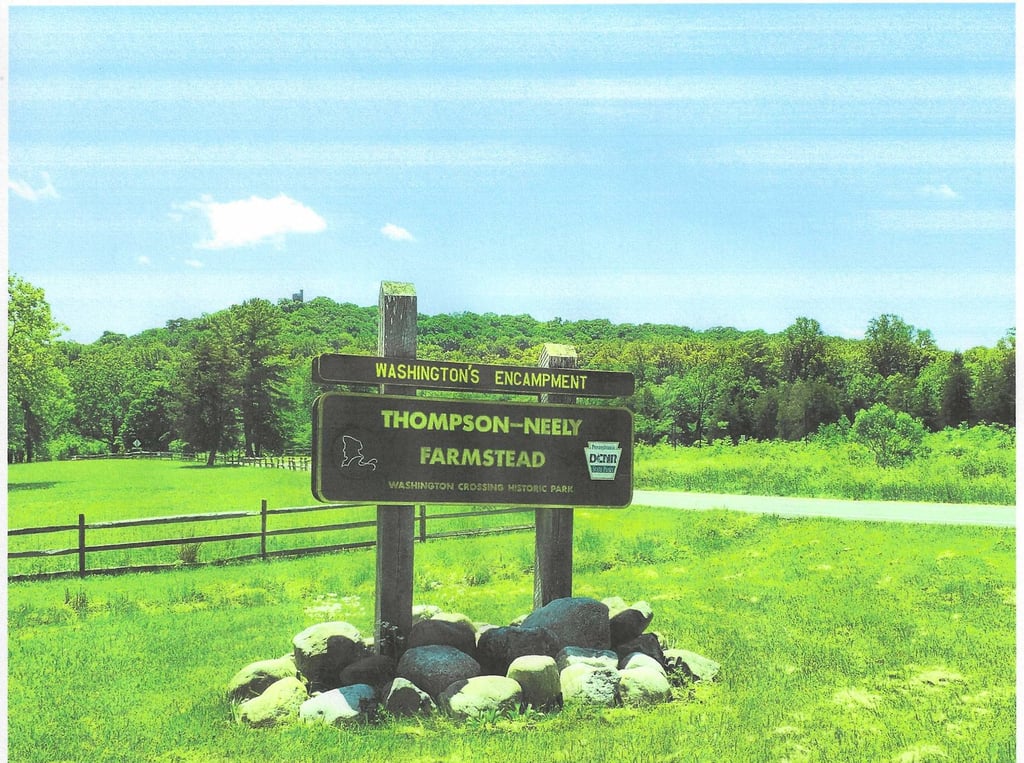

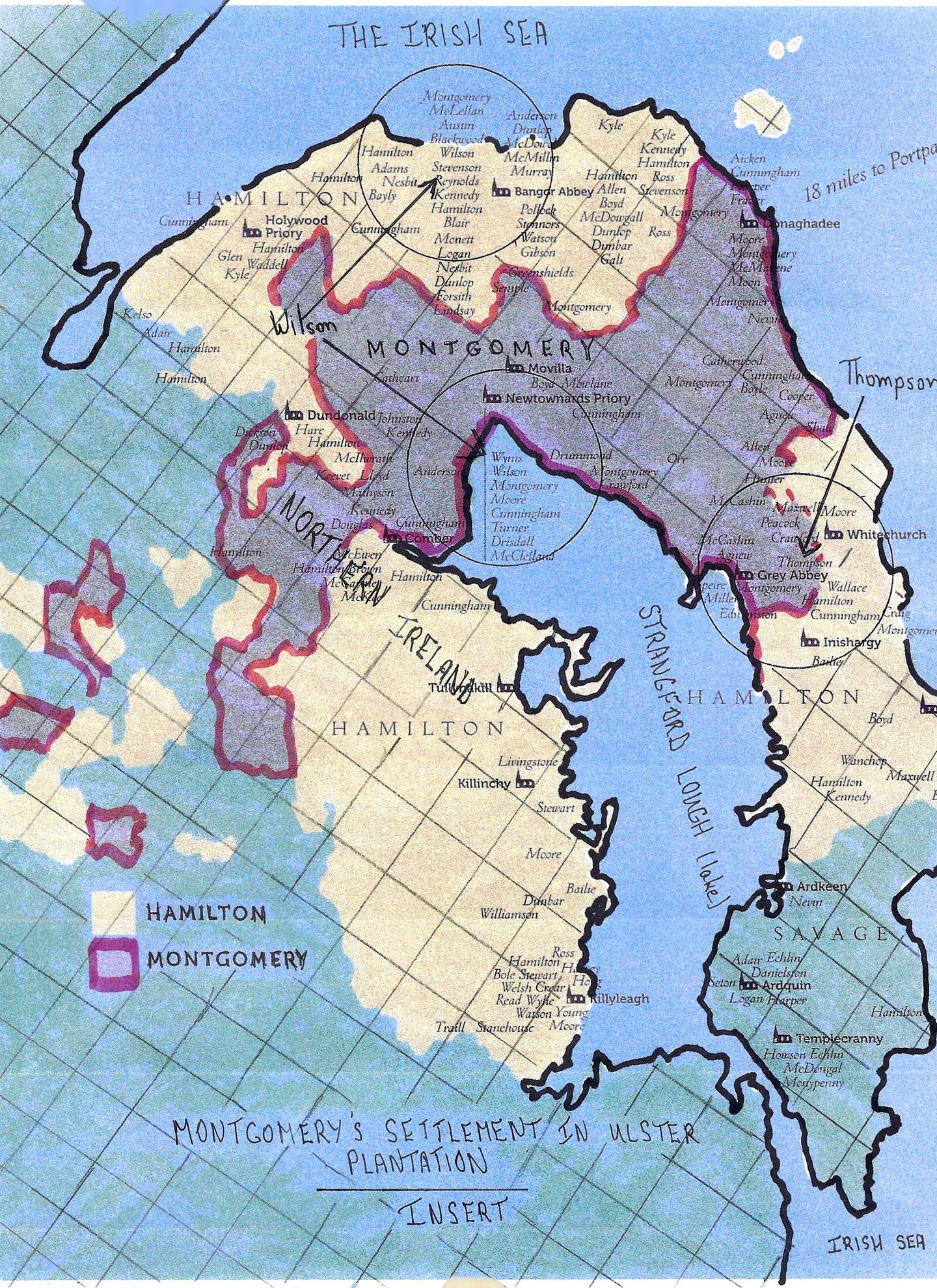

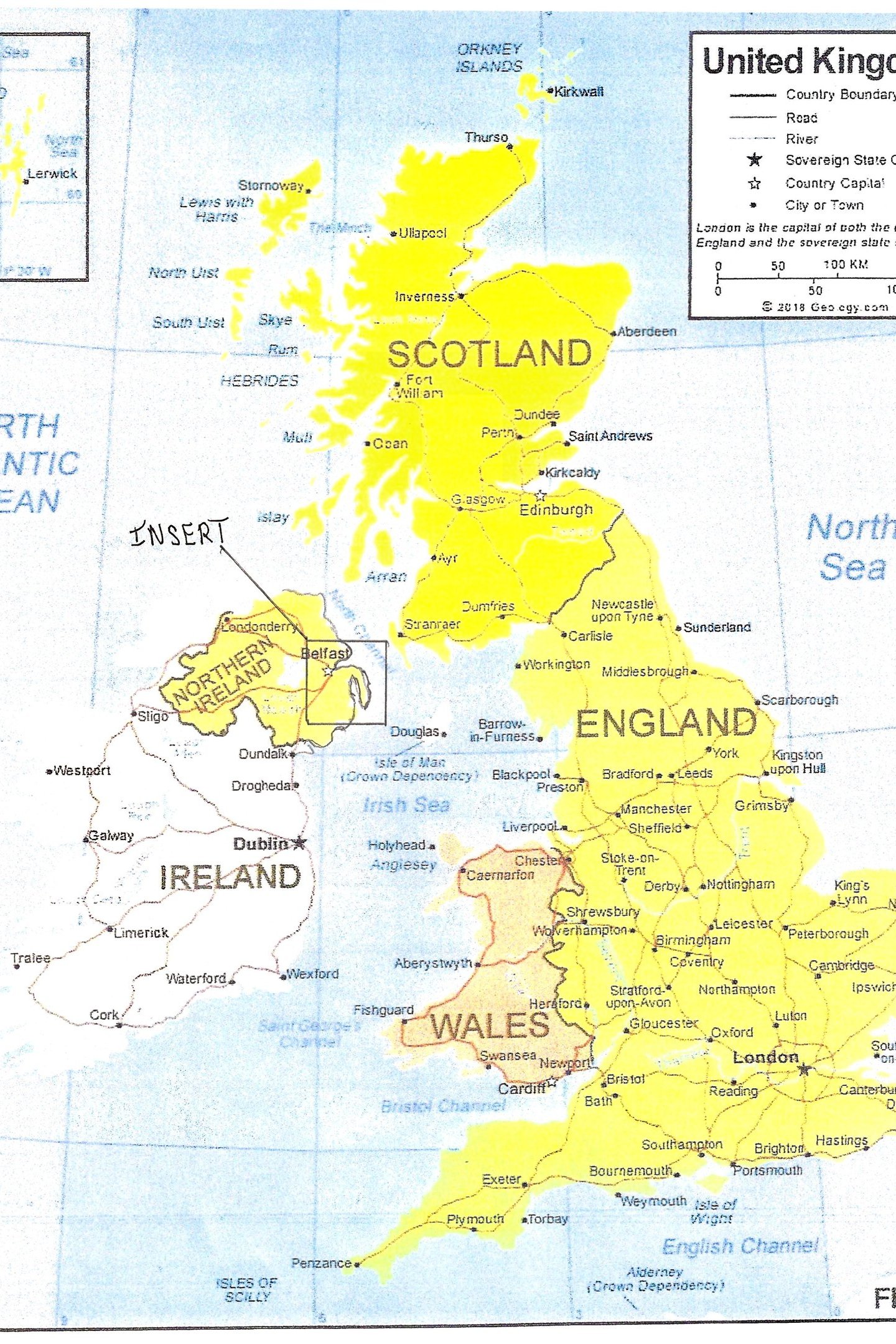

Q7: Where are many Wilson-Thompson Family artifacts, pictures, stories, documents, and collectables stored for safe keeping and preservation? Answer in Rest of the Story section.
What Impact Did the American Revolution Have on Our Families?
One could write volumes on the impact of the American Revolution on the Thompsons, the Wilsons, the McGraudys, the Neelys. The new country yielded many freedoms and enormous opportunities. The freedom for each family member to live their life as they saw fit, and to pursue opportunities of their making, cannot be overstated. They were grateful and humbled.
Another most-precious opportunity was freedom of religion. Legal authorization for freedom of religion started with Thomas Jefferson’s Virginia Statue for Establishing Religious Freedom in 1786. This became the basis for the First Amendment to the US Constitution adopted in 1791, authored by Jefferson's protege Jame Madison.
Why was this important to our families? Our Wilson-Thompson Family Association was, and continues to be, a `big tent’ family particularly in terms of religion. Branches of our family practice various forms of religion without restriction (including no religion at all, if one so chooses). Religions practiced by family members include Presbyterians, Friends/Quakers, Baptists, Lutherans, Catholics, Episcopalians, Methodists, Reformed Anglicans, etc. All are welcome into the Wilson-Thompson Family Association.
We are reminded that Pennsylvania was founded in 1681 by William Penn (pictured below), an English Quaker (Society of Friends), looking to establish a haven for religious freedom. Penn was given the territory of Pennsylvania to pay off a 16,000 pound debt owed his father, Sir Wm. Penn, an admiral in the British navy. While a student at Oxford, Penn attended a Friends meeting and became a Quaker soon thereafter. Bucks County and the Delaware Valley were mainstays for the Society of Friends. We can thank the Society of Friends for much of the written history of our county and state. William Davis writes in the History of Bucks County, “Bucks was a Quaker county, and Pennsylvania a Quaker colony."
Q8: Who was President of the United States when our family had its first reunion in 1891? Who was President when the Thompsons, the Wilsons, and the McGraudy’s emigrated to Pennsylvania? Answers in Rest of the Story section.
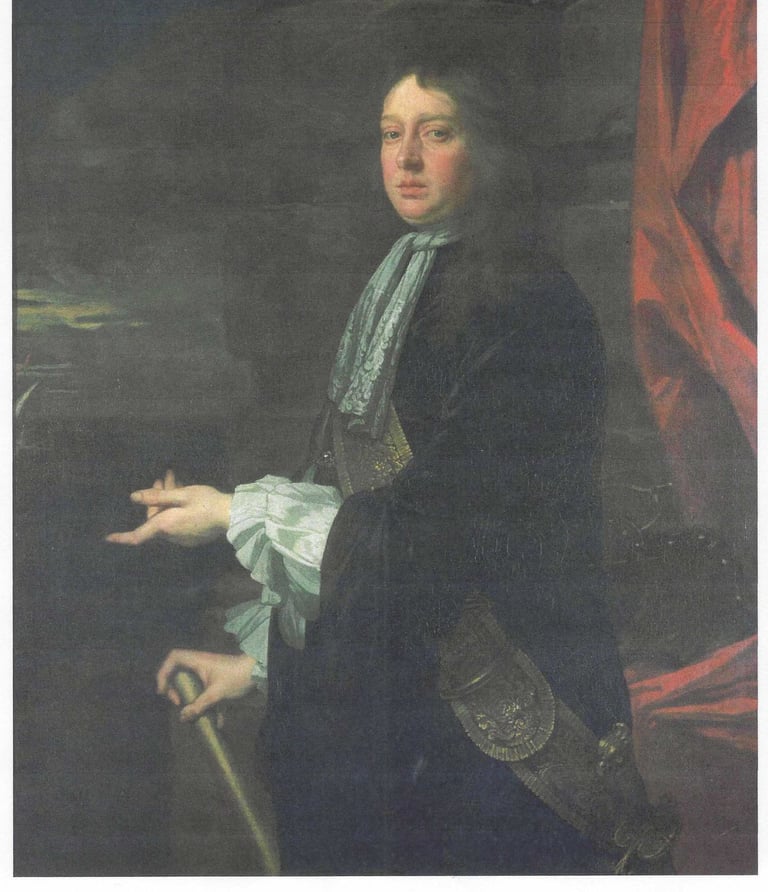



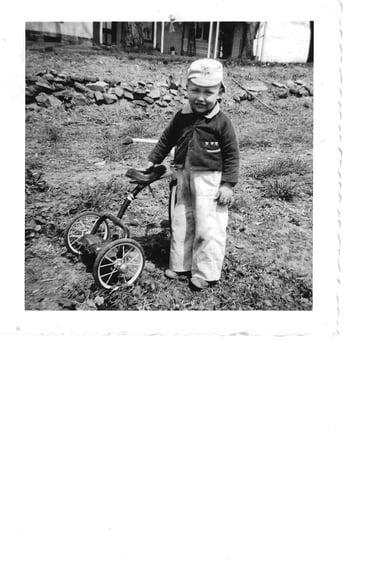

Q1: What well-known survivor of the sinking of the Titanic lived in a mining cabin next to Henry Thompson? Answer found in Rest of Story section
Website Master Jackie Thompson
Website Master Jason Thompson
